Leggy ZZ plants often occur when it is placed in a position that it too dark and if the plant gets too much water. To fix a leggy ZZ plant check to see if the soil is too damp and decide if the plant needs repotting. Repot and split the plant giving it more space and new soil, trim off any damaged stems and move the plant to a brighter position.
In 3-4 weeks you should start to see the stems strengthen, straighten and you may even see new sprouts coming through the soil.
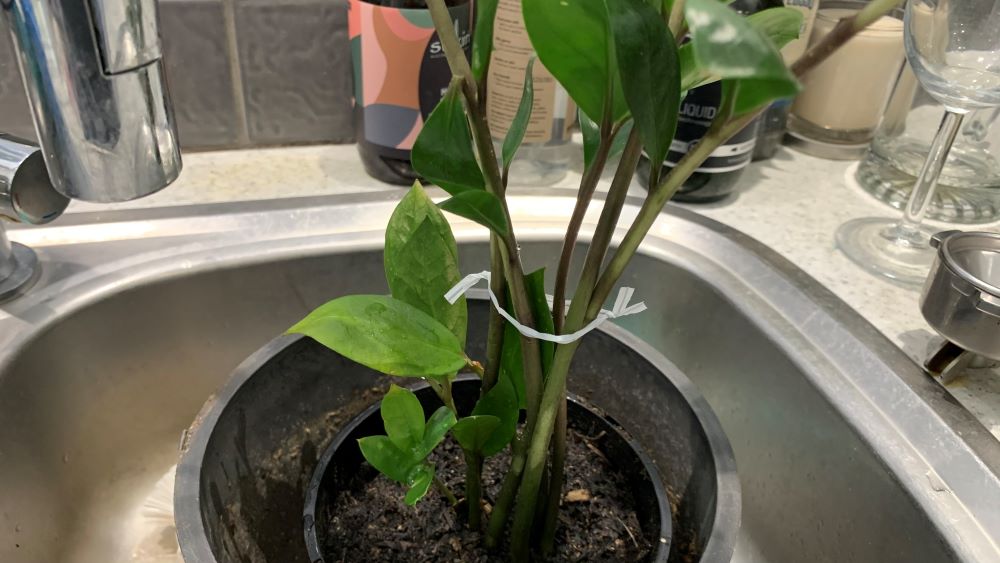
This article will explore the 5 easy steps to fix a leggy ZZ plant to strengthen, straighten and grow new stems.
What causes a leggy ZZ plant
ZZ plants will grow leggy if they are not given enough sunlight. The stems will grow long, soft and can bend over reaching towards the light to increase photosynthesis. While ZZ plants are tolerant of dark spaces, they can become leggy if they are not getting enough filtered light.
You can often notice light green or even yellowing leaves and there will be big spaces between the leaves.
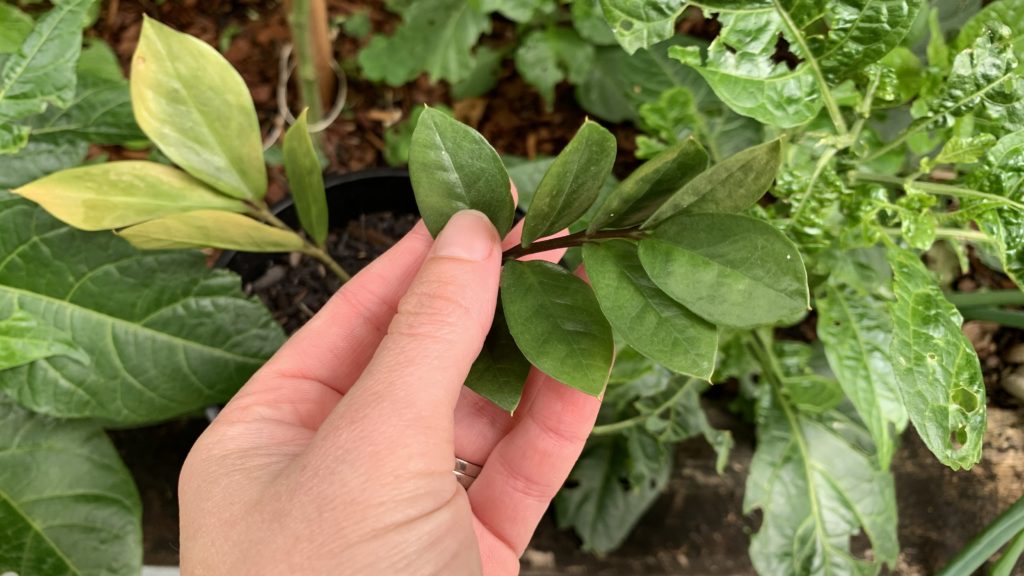
There are some easy ways to fix this problem and to help your ZZ plant to grow stronger stems with lots of dark green leaves.
5 Easy steps to fix a leggy ZZ plant
Here are my 5 easy steps to fix a leggy ZZ plant at home. This will help to strengthen and darken the stems and leaves leading to a healthier plant and increased rates of photosynthesis. This is how the plant makes its own energy and stores it as carbon.
1. Check the soil
The first step to fixing a leggy ZZ plant is to inspect the soil. Healthy soil is key to a healthy plant with healthy roots and stems. If the soil is soggy or is growing mold it is likely that the plant is overwatered and the soil could lack nutrients or oxygen.
If the soil looks very dry you can support the plant to recover by thoroughly watering the soil across the surface. Take the inner pot out and over to your sink or outdoors. Water the top of the soil with your hose or tap until you see water flowing through the drainage holes.

Deep watering every 4 weeks will help the plant to grow strong straight stems.
2. Repot and split the plant if it needs
If you see that the soil is wet, soggy or will not absorb water well then it is best to repot the plant. This is also a great opportunity to split the plant if you have 5 or more stems. Individual rhizomes will grow multiple stems which can be split into new pots.
Repot the plants into new pots with fresh, good quality potting soil and this will help the plant to absorb water and nutrients as it needs. Water the rhizomes in well but do not add any more water for 4 weeks. The roots will settle in and allow the plant to recover from leggy stems.
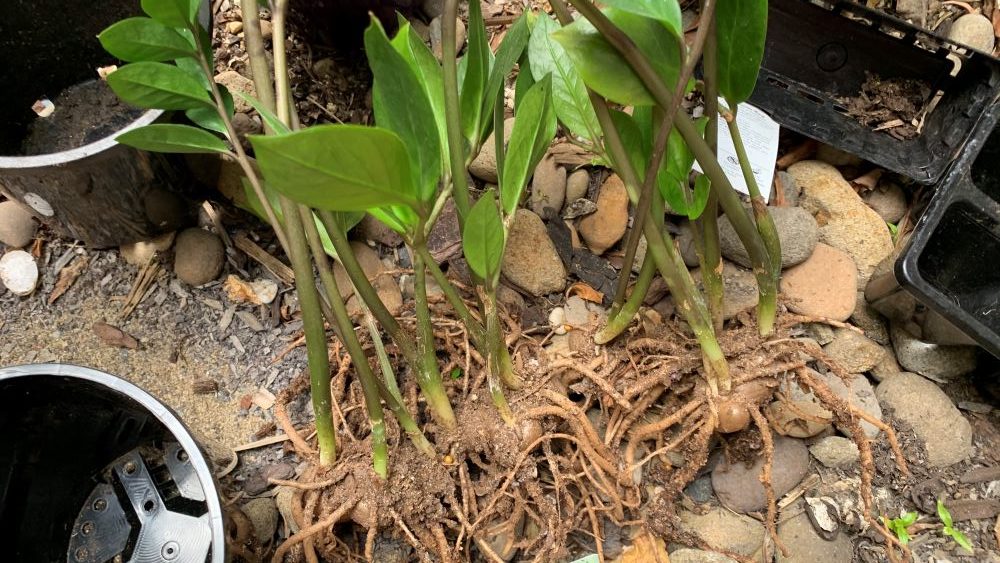
3. Trim off any damaged stems
The next step is to trim off any damaged stems to tidy up the plant and avoid pest or fungal attack. Any stems with breaks or signs of disease should be trimmed off with sharp secateurs. Cut the stems down to ½ an inch above the soil level and the stem will heal over.
Removing old stems protects the plants as they are more vulnerable to pest attack or can develop fungal infections.
Always wear garden gloves when pruning ZZ plants to protect your hands from the sap.

Bent or leggy stems can recover so only remove them if they look damaged.
4. Move the plant to a brighter position
The next important step to help a ZZ plant to recover from leggy growth is to move it to a brighter position. Move it closer to filtered light but out of direct sun. While they are tolerant of shade, legginess can develop if they are not given enough light.
I like to put my ZZ plant on a shelf which is at least 6 feet away from a window. This is out of direct sun but still gets bright filtered light. Place the with other plants to help protect them from direct sun, create a humid microclimate and support healthy stem growth.
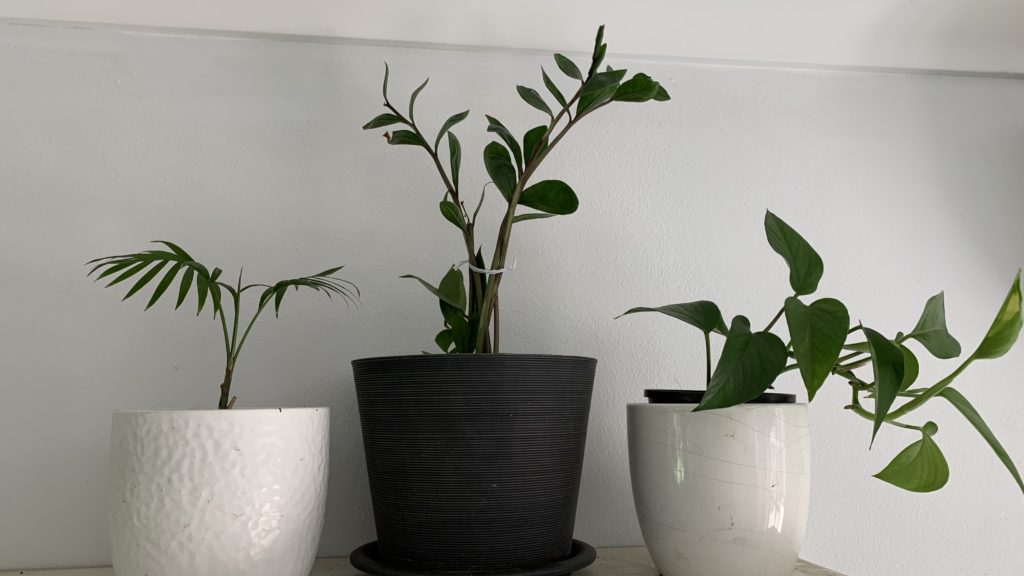
5. Check your watering schedule and fertilize
The final step is to check your watering schedule. Overwatering can lead to your ZZ plant growing leggy with long, soft stems which are not strong enough to stay straight. ZZ plants grow from rhizomes which hold water and therefore make them prone to overwatering.
Reduce your watering schedule to once every 4 weeks. Water the plant deeply and allow the excess water to drain out of the drainage holes. Fertilize your ZZ plant with a slow release indoor plant food every 6 months. Do this in spring and fall to help to give the plant it needs to grow strong, straight stems.
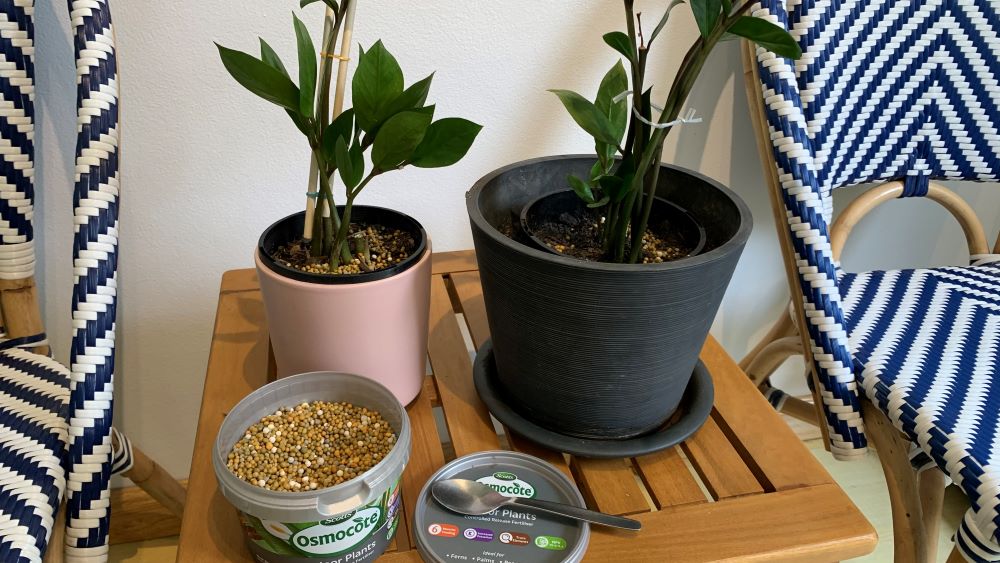
How to fix a leggy ZZ plant | Summary
ZZ plants can become leggy if they are lacking sunlight, nutrients or are overwatered. It is usually a combination of these factors that lead to long, weak and bending stems on ZZ plants.
Strengthen and straighten the stems by watering regularly, fertilizing every 6 months and repotting the plant every 2-3 years to give it fresh soil and more room to grow. Place the plant in an area that gets filtered light to prevent legginess.
For more on growing straight ZZ plant stems, check out my previous article here:
I am an accredited practicing dietitian, experienced gardener and a dedicated cook. I love writing and sharing my experience so you can learn from my successes and mistakes.
